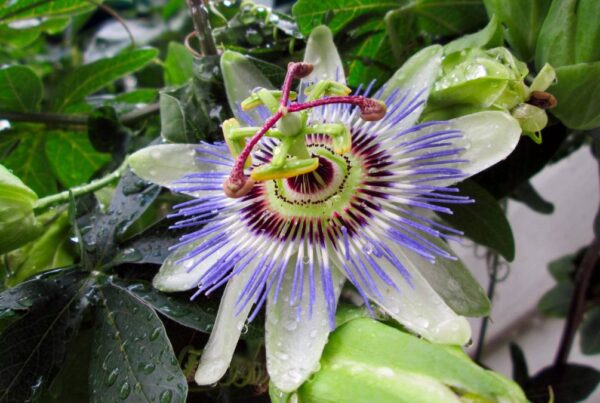Deep Ecology offers a solution to the environmental crisis through a radical shift in human consciousness and a fundamental change in the way we relate to the natural world.
The concept of deep ecology was coined in 1973 by Norwegian environmental activist, mountaineer and philosopher Arne Naess in his seminar paper The Shallow and the Deep, Long-Range Ecology Movement.
Naess spent 12 years living in an alpine hut on the slopes of the Hallingskarvet mountain range in southern Norway and during that time he wrote several influential books and essays on philosophy and ecology.
He believed that “care flows naturally if the self is widened and deepened so that protection of free nature is felt and conceived of as protection of our very selves.”
Deep Ecology Vs Shallow Ecology
Naess distinguished deep ecology from what he called shallow ecology, which he felt was characteristic of ecological science and the mainstream environmental movement of his time:
The shallow ecology movement is concerned with fighting against pollution and resource depletion. Its
central objective is the health and affluence of people in the developed countries.The deep ecology movement has deeper concerns, which touch upon principles of diversity, complexity,
autonomy, decentralization, symbiosis, egalitarianism and classlessness.
The philosophy and practices of the deep ecology movement explore the illusion of our separation from nature and the psychological or spiritual disease that makes modern human beings systematically destroy the biological fabric of life and biodiversity that we depend upon.
Deep ecology shares a lot of similarities in worldview with ecopsychology and animism with the most fundamental tenet of deep ecology being that nature has a value in itself, apart from its possible use or value to humans.
While deep ecology’s philosophy, principles and practices can be important for shifting our relationship with the world, taken to extremes it can create a new set of problems. There are a number of different criticisms of the deep ecology movement, which have been covered in detail by Treehugger and Wikipedia.
The 8 Principles of Deep Ecology
Along with the American philosopher George Sessions, Naess developed 8 essential principles for deep ecology:
1. Inherent value: The well-being of human and nonhuman life on earth has intrinsic values, separate from human uses or purposes.
2. Diversity: Richness and diversity of life forms contribute to the realization of these values and are also intrinsic values.
3. Vital Needs: Humans have no right to reduce this richness and diversity except to satisfy vital need.
4. Population: The flourishing of human life and cultures is compatible with a substantial decrease of the human population. The flourishing of nonhuman life requires such a decrease.
5. Human Interference: The present human interference with the nonhuman world is excessive, and the situation is rapidly worsening.
6. Policy Change: Policies must therefore be changed. These policies affect basic economic, technological, and ideological structures. The resulting state of affairs will be deeply different from the present.
7. Quality of Life: The ideological change is mainly that of appreciating life quality (dwelling in situations of inherent value) rather than adhering to an increasingly higher standard of living.
8. Obligation of Action: Those who subscribe to the foregoing points have an obligation directly or indirectly to try to implement the necessary changes.
Deep Ecology Practices:
The seminal book on deep ecology practices is called Thinking Like a Mountain: Towards a Council of All Beings and was coauthored by Arne Naess, John Seed, Joanna Macy and Pat Fleming.
The book explores nature philosophy, meditations, group work and ritual methods to deepen our felt connection with the living Earth and nourish a wider and more inclusive ecological self.
Other notable advocates of deep ecology practices include John Michael Greer, Charles Eisenstein, Satish Kumar, Theodore Roszak, David Abram, Vandana Shiva, Fritjof Capra and Robin Wall Kimmerer.
To learn more about deep ecology practices I recommend these online resources:
1. Deep Ecology Process Map – An indispensable facilitator guide that summarizes many of the practices taught in the book Thinking Like A Mountain.
2. The Work That Reconnects – A form of group work developed by Joanna Macy that is designed to foster the desire and ability to take part in the healing of our separation from nature.
3. Shinrin-Yoku: The Art and Science of Forest Bathing – Japanese scientist Qing Li did the seminal research on forest bathing and his work has been popularized by the forest therapy movement in the West.
I have personally found that mindful hiking and mindfulness in nature are effective practices for developing the sensibilities of deep ecology.
A Documentary About The Deep Ecology Movement
If you want to learn more about deep ecology, I highly recommend watching this documentary The Call of the Mountain on the life of Arne Naess.
- 10 Best Peru Hiking Tours And Multi-Day Treks In The Andes - April 19, 2025
- 10 Best Banff Hiking Tours In The Canadian Rockies - April 19, 2025
- 10 Best Vancouver Hiking Tours In The BC Coast Mountains - April 19, 2025





